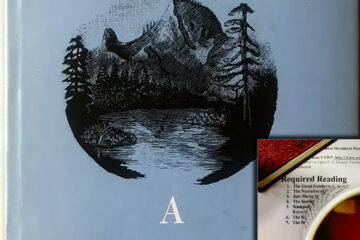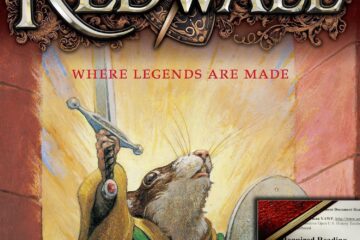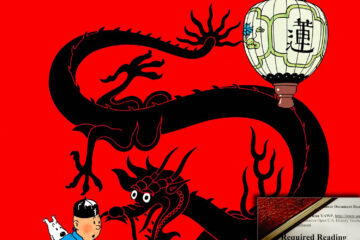What America Is by Josh Stephenson
From the years of 1850 to 1930, the United States of America saw a multitude of vast changes to its landscape. From a sudden influx of immigrants from foreign lands to the birth of capitalistic and intuitive industry, the country shifted greatly in many ways. In a time of so much progression and innovation, it can be hard to pinpoint the true characteristics that mark the American people. From the years of 1850 to 1930 multiple works by the American people exploring the concepts of the effect of war, westward expansion, the introduction of professional sports, and the presence of racism in imperialism and other facets of American life best depict what America was during this time.
The first major event in this time period of American history is the Civil War. A conflict that effectively split the country in half politically laid down the foundation of the United States of America for the next century. By the end of the war, however, multiple losses had been suffered. With over 600,000 estimated deaths, the country saw an unprecedented level of bloodshed that it had not yet seen at this point. As a result, this amount of life lost had a sizable emotional impact on the people of America. This impact is reflected in Walt Whitman’s poem, “The Wound Dresser”. In the work, Whitman details his experiences aiding the wounded as an assistant nurse during the Civil War. He explains his excitement to help in the war effort, but also how difficult it was emotionally and the toll that it took on him. As the poem progresses, he reflects on his commitment to each wounded soldier as he says, “To each and all one after another I draw near, not one do I miss.” This individual connection and commitment by Whitman mirrors the unity and togetherness that marks American people. While he was not fighting directly in the war, he fully committed himself to helping the injured to the best of his ability. This determination to whatever possible to make America its best as a whole is a trait that marks American progression during this time period and shows what America is.
Following the civil war, America began to expand westward through purchase and acquisition of new lands. With this came the shining proposition of new opportunities for the American people in these new lands. This new ideology of westward expansion and the excitement that many Americans had as a result is detailed in Fredrick Jackson Turner’s work titled The Problem of the West. In the book, Turner explains the concept of Manifest Destiny and the fact that as a result of it, the expansion of the country westward becomes an integral part of American life during this time. Despite this excitement, however, Turner notes the fact that the west is only so big and that by expecting so much out of expansion, pioneers are ultimately setting themselves up for financial and economic failure. Regardless, Turner’s explanation of this blind confidence in westward expansion reflects the ideology of thousands of Americans at this time. This strive for greatness and hope in opportunity characterizes the American people, and through his work, Turner displays the mindset that makes up what it means to be American
During this time of growth, America expanded not only physically in its land size, but also culturally. Specifically, the introduction of professional sports becomes synonymous with American culture. In his article titled “Baseball,” Gai Ingham Berlage explains how the sport of baseball progressed from a leisurely pastime to a serious, competitive profession in America.
Through the formation of leagues and the emergence of superstars such as Babe Ruth and Lou Gehrig, the game quickly became a staple in American life and integrated itself as a massive part of American culture during this time. In addition to this, the sport also became a major aspect of American childhood with the introduction of Little league baseball. The progression of sports into a popular profession is a facet of this time that marks what America is and that continues to fuel American culture today. For both adults and children alike, sports became a uniting factor between all American people.
Despite this unity created by sports, however, the issue of racism continued to etch a massive divide between the ethnic groups in America during this time period. As explained by Judith S. Baughman in her work “Baseball: Segregation” the people’s game of baseball was split between races as a result of prejudice. This appeared in the form of colored leagues that were separate from the white-only professional baseball leagues. However, this racial divide was present not only socially within America, but also politically as the country’s borders expanded to foreign lands. This fact is expressed in Louis Dalrymple’s political cartoon titled, School Begins. In the work, Uncle Sam is portrayed harshly scolding colored children representing acquired U.S land while the white students are left to learn peacefully. In addition to this, the colored adolescents are visibly terrified and uncomfortable with how they are being taught. This visual is both a literal and symbolic representation of the issues of racism during this time period. After conquering foreign lands, the U.S government would force their ideals and ideologies on the people while disregarding and ignoring their culture. This ignorance stemmed from the idea that outside people and races were inferior and less than due to the color of their skin. Despite the remarkable bounds that America made as a whole, segregation, racism, and the overall mistreatment of colored individuals is a blemish that mars this era and unfortunately is a key aspect of what America is.
During a period of such monumental change and shift, such as that of 1850 to 1930 in America, pinpointing what characterizes a nation can be a challenge. It is clear that during this time, America was defined by its people. While industrial advancements and political adjustments were major, America from 1850 to 1930 was described by its peoples’ expression. Whether it was beautiful poems such as Walt Whitman explaining his experiences and struggles, or Alexander Cartwright transforming a recreational game that he loved into a professional sport, the growth that America saw during this time and what it was defined by are a result of its people. The act of Americans unlocking their minds to the freedom of expressing themselves and expanding their boundaries both mentally and physically is what characterizes this era. America from 1850 to 1930 is a nation that is distinguished by the expression of its people as they strived for greatness with optimism of a bright future.
What is America? By Haddon Buschmann
The identity of America is based on the leaders and citizens who come together to form one country. The period from 1840 to 1930 was a significant era in American history. Starting with a war and ending with a war, the country had to find a way to put itself back together in order to heal and grow. This period of foreign, governmental, and financial growth, America was forced to unify and cooperate in order to prosper. They had to figure out how to deal with the south and the newly freed slaves. America is built on the backs of all of the hard workers and laborers who toil every day. With a stable economy, people were the richest that they had ever been, and it provided chances for prosperity and freedom. The idea of the American Dream brought immigrants from around the world to experience the freedoms that America had to offer. During this time of wealth and rapid industrialization, citizens were able to focus on social equalities within the country. Even though on the surface America seemed to prosper and everyone had a place, many people had to work at the bottom to get us there. Also, even though there were huge advancements in rights for blacks, immigrants, and women, they continued to be discriminated against. America is a society with citizens that work hard to build a country where people can prosper and live freely, but millions of people continue to live unfairly with limited opportunities.
America is well known for its work ethic and rigor when it comes to building a country. After the war and hardship, America came together to heal, grow, and become a more advanced nation. Although many people think of the prosperous and wealthy figures who became popular during the Gilded Age, the millions of workers and laborers who brought America to prosperity are seldom recognized. A song that demonstrates the American work ethic is called, “Sixteen Tons” by Tennessee Ernie Ford. The song speaks about the daily life and hardships of the many coal miners during this era. The speaker describes how working laboriously and persevering through hard times gave him “a mind that’s a-weak and a back that’s strong.” Even though poor men were not provided with good education, they used their skills to build and create. The pathetic fallacy within this song describes how “the sun didn’t shine” and “it was drizzling rain.” These details represent his life full of adversity. He was “fighting” with his “iron fist,” and nothing stops him from getting what he wanted or finishing his job. This song embodies the effort and diligence of American workers, and how even though they are faced with many troubles, they will never give up.
Another source that demonstrates the hard work of America is the speech called, “The Man in the Arena.” This speech highlights the success of the individual worker. Roosevelt describes how in order for a country to thrive, the “average citizen must be a good citizen.” Great workers lead a country to greatness, but if everyone does not do their part, the country will fail.
The greatest leader is only as good as the people who work under him. He does not give credit to the leaders who guided the country to success, but instead to the “man who is actually in the arena, whose face is marred by dust and sweat and blood.” America would be nothing without the men who “put forth all of their heart and strength.” America’s rapid industrialization and wealth during the Gilded Age and the Roaring 20s would not have happened without the abundance of labor that workers provided. This speech effectively persuades the audience that prosperity is only achievable if every citizen works hard for it, and it demonstrates the hard work that workers did for the country to prosper.
Because of the stable economy in the Gilded Age and the Roaring Twenties and the opportunities the west provided, America provides everyone a chance to prosper and have creative freedom to do what they want. This freedom and opportunity is what brought millions of immigrants to America hoping to discover the idea of the American Dream. A poem that demonstrates this is called, “The New Colossus” by Emma Lazarus. This poem is on the pedestal of the Statue of Liberty in New York City, and this is what all immigrants see when they first enter America through Ellis Island. This poem provides, “world-wide welcome” and hospitality to those entering the country and give them the promise of freedom. Immigrants came to America in “huddled masses yearning to breathe free.” The poem promises these people freedom and gives them hope for a better future full of prosperity. The statue of liberty shines the guiding light of hope as it “lifts [its] lamp beside the golden door. “This “golden door” represents heaven and a successful life.
Another source that describes the freedom and possibilities for Americans is the song, “Don’t Fence me In” by Cole Porter. This song describes the widespread Western terrain that is available and desiring to discover the world instead of being fenced in with cities and urbanization. The speaker asked his audience to “just turn [him] loose” to be free to explore and create without any restriction. He wants God to give him “lots of land under starry skies” without the interruption of the government to hamper his creativity. The song demonstrates the American Dream and the American’s love of exploration and prosperity. This song demonstrates the opportunities that are provided in America to create a new life where there are no boundaries.
Although on the surface America seemed perfect, underneath, people were living in harsh conditions while being discriminated against. The world mostly recognized the rich and intelligent people during this period, but the other half had an entirely different story. It was called the Gilded Age because it had a shiny and great facade, but under the mask was filled with cracks and deterioration. Even though there were many progressive movements that provided rights to many people such as freeing slaves and granting women’s suffrage, these groups continued to be ignored and beaten down. One photograph taken by Jacob Riis that demonstrates the unfair life lived by the poor is called, The Boy in the Glass Factory. Jacob Riis opened the eyes of many Americans by photographing and capturing the working conditions that millions of people lived through. This photograph depicts a young child wearing clothes that do not fit him working in a dangerous environment. People and kids had to do this work in order to live and eat, but the conditions that they worked through were barely survivable. This photo demonstrates America was not as great as it seemed on the surface, and the other half of people did not have as many opportunities to live a prosperous life.
Blacks were one of the main groups to be discriminated against. With groups like the Ku Klux Klan, segregation laws, and constant lynching, African Americans were unable to live a prosperous life or have the same opportunities of white people. One example of this is in the speech, “Meaning of the Fourth of July to a Negro” by Frederick Douglass. This speech highlights the unequal life and the double standard that African Americans had to live through. He explains that the blessings that whites enjoy “are not enjoyed in common” with all citizens of the country. It is ironic that Americans celebrate freedom on the Fourth of July when millions of Americans are still in chains and are held back by society. If every “man is entitled to liberty,” where is the freedom of millions of blacks across the country?
Immigrants throughout America were constantly excluded from society. With movements such as the Chinese Exclusion Act of 1882 stripped many immigrants of their freedoms and liberties that they came to America for. A political cartoon that shows the discriminations of Chinese and immigrants is, “Pacific Chivalry” by Thomas Nast. This illustration represents the Americans’ anti-immigrant mindset and their maltreatment of Chinese people. Many Americans and immigrants were not treated equally, and they had to undergo unfair and prejudiced opposition against them, and they were not able to live the free, normal lives that the American Dream promised.
America was built on the backs of the individual worker, and the country’s identity is based on the average citizen. Because of these hardworking people, America was able to prosper and that provided many opportunities for growth and creativity. The idea of the American Dream pulled people to America and gave them hope of wealth. Even though many people recognize the prosperity of America, the other half of people were not living glamorous lives. Many groups were continuously discriminated against, and the condition of living was not healthy for the lower-class worker. America seems glamorous and amazing on the outside, but under the layer of gold, there is hardship and decay.


